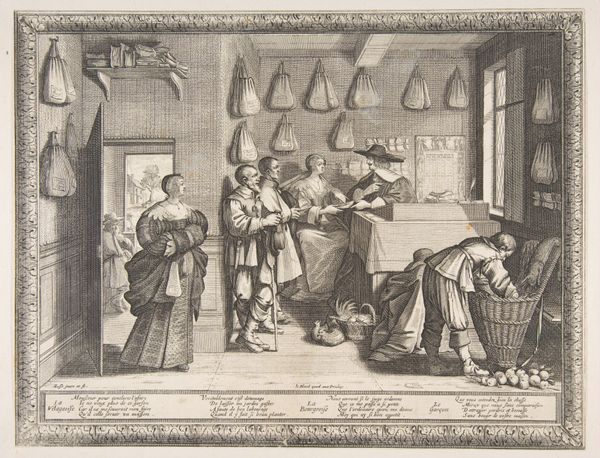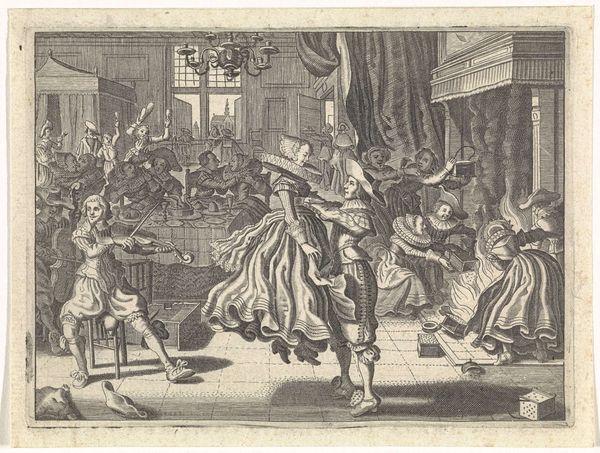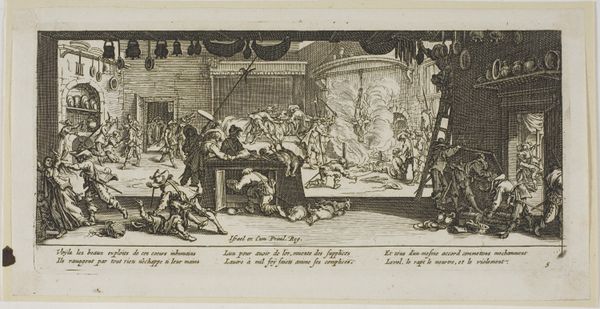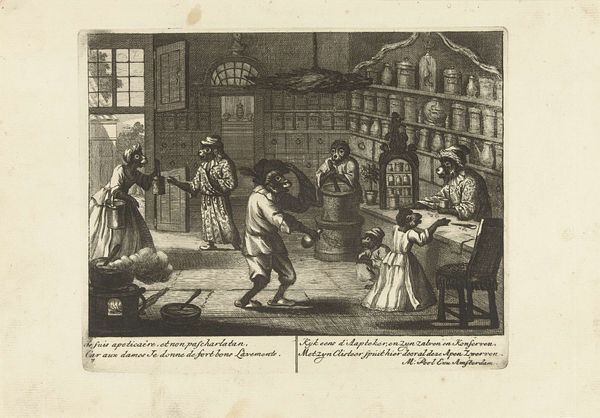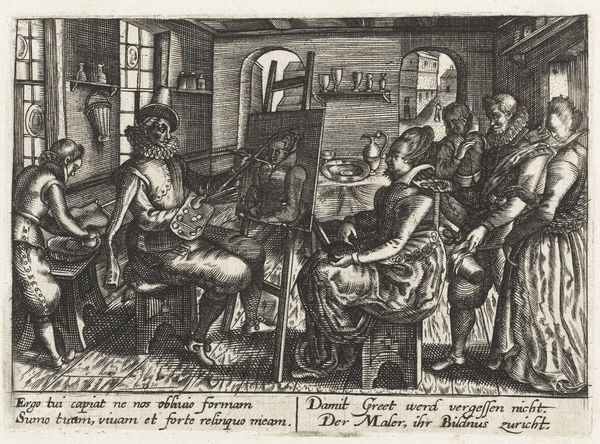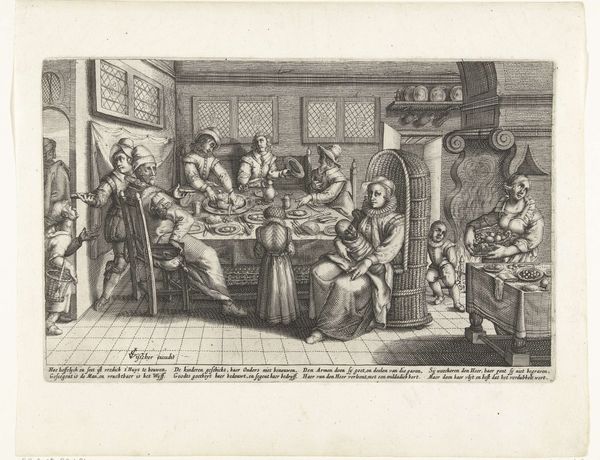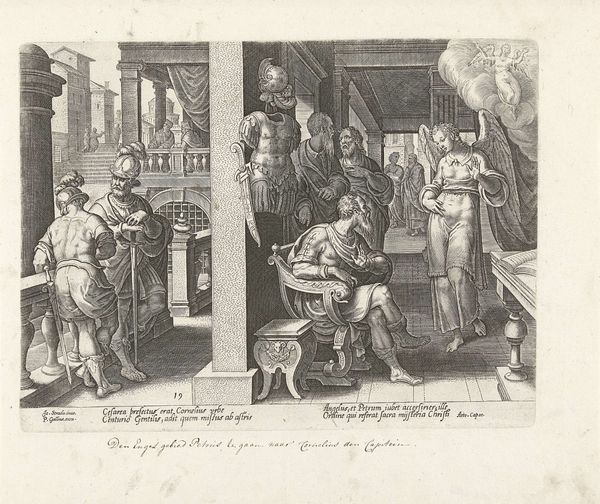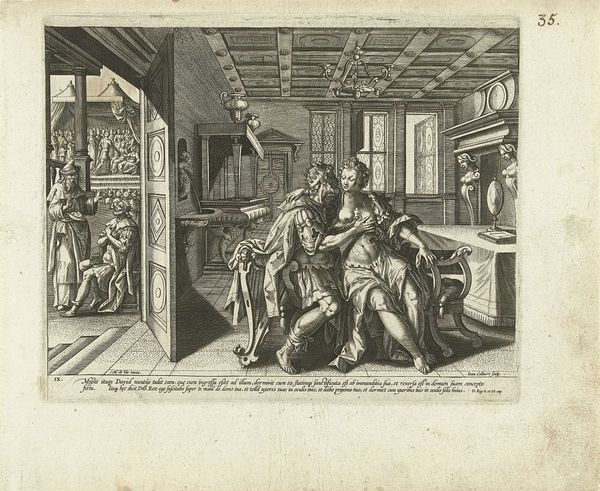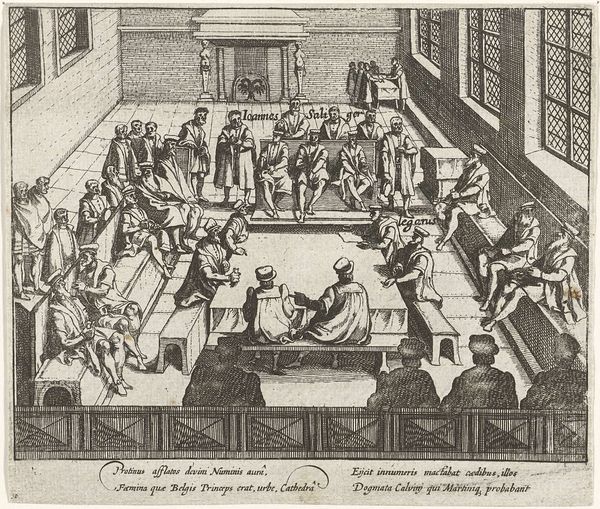
drawing, print, metal, etching
#
drawing
#
medieval
#
narrative-art
# print
#
metal
#
etching
#
figuration
#
genre-painting
Dimensions: height 225 mm, width 288 mm
Copyright: Rijks Museum: Open Domain
Curator: Here we have a piece titled "Eert uw ouders," which translates to "Honor thy Parents," created before 1602. It’s attributed to Gillis van Breen and is currently held at the Rijksmuseum. The artwork combines the techniques of drawing, etching, and working with metal. Editor: Right, the first thing that grabs me is this contrast. You've got a bustling family dinner happening in the foreground, while this almost shadowy, aged man is off to the side, seemingly neglected. It’s unsettling, visually splitting the scene like that. Curator: Indeed. The spatial arrangement underscores the theme. We're observing a contrast between the actively honored and those perhaps forgotten or sidelined within the familial structure. Consider how the artist utilizes the etching medium, layering lines to create depth and shadow that literally obscures parts of the narrative. Editor: It's definitely making me question the 'ideal' family scene that’s typically painted from that era. All those cheerful gatherings often glossed over the complicated realities of aging, and how societies treat elders. Curator: Precisely. Seventeenth-century Dutch art often served didactic purposes, imparting moral lessons about proper social conduct. The choice of rendering the scene with sharp detail using etching served not just an aesthetic purpose but amplified the picture's instructive tone. The inscription at the bottom in both Latin and Dutch is a commentary underscoring the obligations children had to their parents, particularly during their twilight years. Editor: You know, despite all that crisp detail, there's still this haunting feeling. Like, are they really honoring their parents or just putting on a show? Is the younger generation too busy enjoying the present moment to fully recognize the weight of what came before? This is more than just an instruction, it’s more than what first meets the eye. Curator: Agreed. The scene's complexity encourages questioning, offering a glimpse into social tensions of the time concerning generational duties and family values, and as an institutional object that we still discuss today, "Eert uw Ouders" remains a compelling historical document. Editor: Yes, the generational conversation it started so many years ago continues now through us, which is powerful in and of itself.
Comments
No comments
Be the first to comment and join the conversation on the ultimate creative platform.

